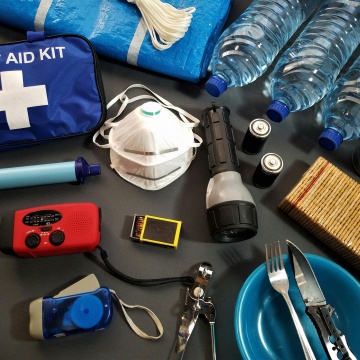Emergency Preparedness & Response

Our Role in Emergency Preparedness & Response
We help support the health and safety of our community before, during, and after a public health emergency. A public health emergency might be a natural disaster or human made. Examples include:
- Disease outbreaks, like COVID or measles
- Severe weather, like flooding or extreme heat
- Biological threats, like an anthrax attack
We do this work in coordination with community partners and existing emergency response agencies, like police, fire, hospitals, and Dane County Emergency Management.
Depending upon the emergency, our role may look different, but generally includes:
- Providing education and information
- Collecting and analyzing data to support response actions
- Working to minimize health impacts of the emergency
Your Role in Emergency Preparedness & Response
Everyone in our community is responsible for being as prepared as possible for disasters and emergencies. Make a plan for your family now!
- Put together an emergency kit with food, water, and other supplies you’ll need for several days. Plan for your pets too!
- Put together a family emergency communication plan with phone numbers, medical information, emergency meeting places, and more. You may not be together when an emergency happens!
- Read up about emergency alerts. Some will go to your phone automatically, others you have to sign up for.
- Know what you’ll need to prepare if you have to shelter at home, at the place you’re in when an emergency happens, or at a mass care shelter.
- Make an evacuation plan: how you’ll leave, where you’ll go, places that take pets, and more.


